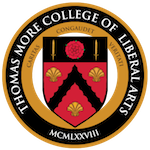As a youth, Churchill told Violet Bonham-Carter: “We are all worms. But I do believe I am a glow-worm.” He was the man for the world’s worst cataclysm, as Lincoln was the man for our nation’s defining moment. Both were, as the ancients were wont to say, Tam Marti quam Minerva or, paraphrased, as courageous as wise. It is hard, outside very providence more than coincidence, to explain such figures, and the mystery surely could not have been lost on the great men themselves.
Their saving grace was to take their moment more seriously than they took themselves and to take their own greatness in stride. When a boy asked him if he was really the greatest man in the world, Churchill grumbled, “Yes, now buzz off.” When Lincoln was accused of duplicity, he replied, “If I were two-faced, would I be wearing this one?” In so saying he embodied the existential golden mean between tragedy and comedy that saves a time of testing from unwinding into misery or absurdity.
Real wars, like their real heroes, are larger than myth—and the circumstances attached to them surpass the stuff of legend. It was so even with the prolegomenon of the Civil War. Long before the capture of Fort Sumter, coincidence seemed to be setting the stage for our national drama. The leader of England’s abolitionist movement, William Wilberforce, entered Parliament in 1780 at the same age Lincoln was when he settled in Illinois in 1830. Wilberforce died as Lincoln was appointed postmaster. At the same time, Wilberforce was the world’s foremost antislavery statesman. So, 23 years after slavery was eliminated in the British Empire, Wilberforce College was founded in western Ohio for the higher education of blacks. Oblivious to the coincidence, on that day in Osawatomie, Kansas, 300 pro-slavery men attacked 40 of John Brown’s followers.
In the Mexican War ten years before, an amazing array of military talent formed behind their generals, Zachary Taylor and Winfield Scott, with names that would grow in prominence: Colonel Jefferson Davis, Lieutenant Ulysses S. Grant, and two with the rank of captain, George McClellan and Robert E. Lee. During his brilliant maneuvers at Cerro Gordo en route from Veracruz to Mexico City, Lee had Grant and McClellan under his command.
McClellan notoriously hesitated at Antietam on September 17, 1862. And this in spite of the discovery of Confederate plans written on a paper used to wrap some cigars. McClellan’s cousin, Henry Brainerd McClellan, was chief of staff to the Confederate Major-General J.E.B. Stuart. This may not rank as much of a coincidence, since so many families were divided in their loyalties. Coincidence glares here, however: Lee was born when Wilberforce’s antislavery measure first carried in the House of Commons, Stuart was born when Wilberforce died, and both Grant and McClellan died in 1885. On the same Fourth of July in 1863, the city of Vicksburg, with 30,000 troops, surrendered to Grant, and the troops of Lee were defeated at Gettysburg.
Wilmer McLean certainly had reason to rue the strange workings of coincidence. He was a landowner in Virginia who watched with fascination and trepidation as the first Battle of Bull Run unfolded near his homestead in the summer of 1861. A year later, the second battle devastated his properties. Fed up, he chose to move to a quieter place unknown to the chariots of Mars. He removed family and possessions to the sleepy town of Appomatox; however, things were not uneventful there. When the dust of battle settled, Lee surrendered to Grant in the parlor of McLean’s house.
Such intertwinings and correlations gave a predictable ghostliness to the horror and heroism of those days. One hundred years after Lincoln’s first political appointment, a woman telephoned the editor of the Richmond News Leader to say that General Lee’s bronze horse, on his monument in Richmond, was foaming at the mouth. A reporter investigated and found that a swarm of bees had built a hive in the statue’s mouth, and summer heat had caused the honey to foam. Why the bees had chosen Lee’s “Traveler” rather than Stonewall Jackson’s “Little Sorrel” nearby, or any of the other horses on Monument Boulevard is, as they say, unclear. To military historians it may have seemed just a coincidence but a fitting one. And so thought the southern lady with a long memory who reported it as though she were Elisha witnessing the ascent of Elijah. No one in Richmond thought her foolish.

